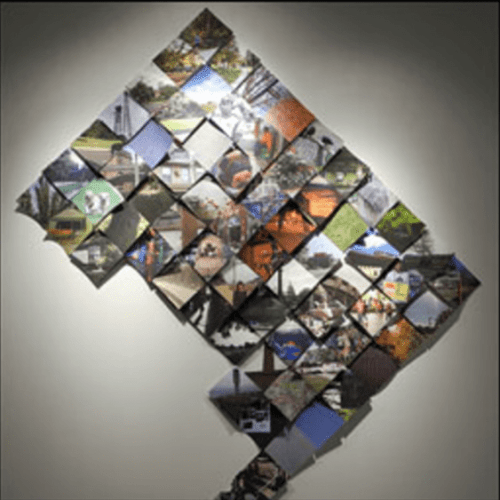
“Of all media, only photography would get an art critic talking about someone from the commercial side of the tracks,” wrote former Washington Post art critic Blake Gopnik in a 2009 piece that addressed Vanity Fair photographer celebrity portraitist Annie Leibovitz. “My gripe with Leibovitz,” he wrote, “is that she’s copycatting [Richard] Avedon, who had his heyday a half-century ago.” In his article, Gopnik sized up the current state of photography and found precious little room for innovation. “We’re seeing repetition instead,” he wrote. “Some genius may need to come along and bail [photography] out.”
I was recently reminded of Gopnik’s sharp assessment of the medium when I visited “Artist-Citizen” at Hemphill Fine Arts. The show focuses on artistic civic engagement—artists that are out of their studios and walking the streets. Mostly culled from the gallery’s stable of artists, “Artist-Citizen” presents works that speak through the city itself. And perhaps because most of the show’s works are on some level preoccupied with documentation of people and places, much of the speaking happens through photography.
Take the work by free[space] collective, which consists of artists Billy Friebele and Michael Dax Iocovone. Their project “DC Photo Grid” invites viewers to photograph public spaces in D.C. and to upload the images to the project’s website. The photos are then geotagged, printed, and mounted on a wall grid according to their physical location within the city. Any pretense of authorship is lost beneath layers of meaning—no images are attributed to any single individual, and the photos are cropped before they’re placed on the wall grid, essentially obliterating the original composition. Gopnik thinks that a genius needs to rescue photography, but the ongoing democratization of photographic tools and processes—put to good use with this type of anonymous, collective endeavor—may be what the future of photography increasingly looks like.
On the other side of the gallery are 13 paintings by Mingering Mike, each a portrait of a member of the D.C. Council. The paintings are produced in the naïve painting style that characterizes Mike’s work, so there’s an intentional lack of interest in perfection and detail. What matters here is the grittiness, the earnest and frictional exchange between hand and canvas. It stands as an interesting counterpoint to the impeccable photographs by Max Hirshfeld. His portraits of D.C.’s cultural workers—dancers, writers, gallerists—are made to be frictionless, decidedly “from the commercial side of the tracks.”
It’s easy to linger over the blemishes and imperfections in Mike’s paintings while glossing over Hirshfeld’s perfect portraits. Maybe it’s that evidence of human intervention and frailty that photography could use more of.